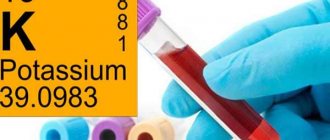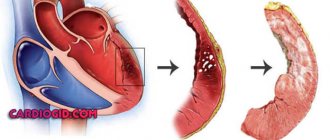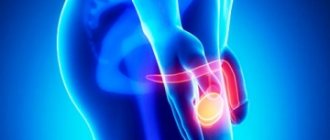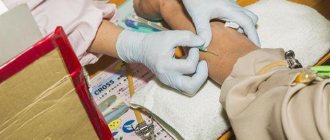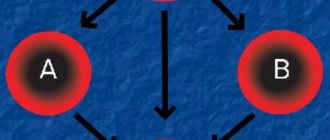17.08.2017
Last modified: August 2, 2021 at 11:27 pm
Hypertension is a disease that ranks first in Russia in terms of mortality. The scary words “stroke”, “heart attack”, “heart failure” are typical complications of high blood pressure.
One of the factors contributing to the development of hypertension is excess weight. A patient with hypertension falls into a trap: he loses weight like an ordinary healthy person. Serious physical activity can cause a hypertensive crisis, strict diets are contraindicated... What to do?
It is important to know
- The diagnosis of obesity is made when the waist circumference in men is more than 94 cm, in women - more than 80 cm at any height. Correctly measure at navel level
- we must remember: we eat to live, and not “we live to eat”
- our recommendations are not a short-term diet, this is how every person who wants to be healthy, live longer and better should eat
- remember, for weight loss 80% is proper nutrition, 20% is physical activity
- physical activity can begin with walking for 30 minutes 3 times a week, gradually increasing the frequency and intensity of training (target speed - 6 km/hour, walk 3 kilometers every day in 30 minutes) is considered good intensity. Bicycling, swimming, running, and team sports also help well: volleyball, football, basketball, tennis. In good weather, it is preferable to exercise outdoors, in the morning, while you have the strength and the air is not yet heavily polluted with exhaust gases.
- the amount of fluid consumed is 30 ml/kg in healthy people, 40 ml/kg in obese people, but not more than 4 liters per day. Try to drink alkaline still water, the pH of which approaches 7. The alkaline or acidic state of water can be determined by special test strips for the oral cavity, which are sold in pharmacies. Here are some examples of water pH measured by us: Elbrussia - 7.0; Aqua Dombay – 6.5; Pilgrim – 4.5; springs of the Caucasus – 4.5; Mountain Top - 4.5 (from this it follows that preference is given to Elbrussia from Cherkessk and Akva Dombay)
- nutrition should be varied and balanced. Among protein products, preference is given to red fatty meats (beef, lamb), fish (preferably wild, not farmed and raised outside the wild), eggs, and fermented milk products. Eliminate fast carbohydrates completely (sweets, sugary drinks, white flour products). Replenish carbohydrates with vegetables and fruits, preferably fresh
- go to bed no later than 22.30, sleep duration is at least 7-8 hours. The sleep hormone melatonin is a fat burner. You need to sleep in a well-ventilated room with fresh air, at a temperature of +19 degrees
More information about the principles of a healthy lifestyle can be found HERE.
Exercise and hypertension
Losing weight with hypertension has its own characteristics when it comes to physical activity. Overload is dangerous for a sick person, but exercise is necessary not only for losing weight, but also for good health. They strengthen the heart and blood vessels, restore cholesterol metabolism (namely, its disruption is one of the causes of hypertension).
So, should there be physical activity? Yes, but it's not that simple.
The following are contraindicated for hypertensive patients:
- strength (working out with dumbbells may be the last exercise in your life);
- aerobics and other types of rhythmic gymnastics (the hypertensive heart is not suitable for this);
- many yoga practices (with the exception of special classes for hypertensive patients, which are taught by professional and well-trained instructors).
What exercises are good for high blood pressure?
- swimming;
This is the best option for hypertensive patients! Water burns calories, stimulates blood circulation, gives an even, but not colossal load on all parts of the body (which is especially important for people suffering from joint diseases: gout, arthritis, osteoarthritis, etc.);
- walking;
Regular walks over long distances will strengthen your muscles and help reduce blood pressure and weight. In good weather, try to walk 2 to 5 km per day.
- riding a bicycle or exercise bike at a moderate pace;
- running at a moderate pace.
You don't have to run a marathon right away! Start with brisk walking and gradually increase the load. Monitor your pulse and your condition - if you feel unwell, it is better to stop and rest. And be sure to consult with your doctor before starting regular exercise.
- oriental or ballroom dancing (hip-hop or modern jazz are contraindicated for patients with hypertension, but slow ones are what is needed to restore good physical shape).
The main thing is to monitor your well-being and do not be afraid to seek medical advice. And don’t try to lose weight quickly: this will only undermine your health and will not give significant results. Your credo should be regularity, consistency and gradualism.
Foods that can be consumed without restrictions
- cabbage (all types), mushrooms, cucumbers, tomatoes, peppers
- lettuce, greens, spinach, sorrel
- tea, coffee without sugar and cream
- drinking still water
- meat (lamb, turkey, veal, beef). Avoid chicken, it contains a lot of hormones and antibiotics (you can only eat homemade chicken)
- wild fish
- zucchini, eggplant, beets, carrots, green beans, radishes, turnips, green peas (vegetables can be eaten raw, boiled, steamed, baked; frying is not recommended)
The use of fats (butter, mayonnaise, fats) in cooking is not allowed.
Foods to eat in moderation
- milk and fermented milk products of normal fat content, and preferably homemade. Do not use low-fat dairy products!!!
- boiled potatoes, preferably steamed
- mature legume grains (peas, beans, lentils)
- whole grain cereals (no more than 6 tablespoons per serving). Eliminate semolina, white rice, instant cereals
- vegetable, meat and fish soups cooked in a second broth
- pasta cooked al dente (durum wheat only) (no more than 6 tablespoons per serving)
- bread and bakery products - not rich (preferably coarse or whole grain bread, 1-2 pieces per day)
- fruits (except those specified in the “exclude” paragraph)
- nuts, seeds
- eggs
“Moderate amount” means half of your usual serving. Food should be as natural as possible, “roughly cooked” - it is better to undercook than to overcook.
Products that need to be excluded or limited as much as possible
- vegetable oil (2 tablespoons per day is allowed, preferably vegetable, flaxseed) and only unrefined
- mayonnaise
- exclude meat raised with hormones and antibiotics, usually pork and chicken
- smoked meats, sausages, frankfurters, wieners
- canned meat, fish
- sugar, honey
- fruits and berries: bananas, grapes, dates, watermelon, melon
- preserves, jams
- candies, chocolate (if you really want it - 1/4 bars of dark chocolate with a cocoa content of 70-90%)
- pastries, cakes and other confectionery products
- cookies, pastry products
- ice cream
- sweet drinks (Coca-Cola, Fanta, etc.)
- alcoholic drinks (250 ml of dry red wine, 50-100 ml of vodka are allowed - maximum 2 times a week). Avoid beer completely!!!
Any cooking method is allowed (baking, boiling, steaming, grilling, frying), most importantly without adding fat. Try to use dishes that allow you to cook food without adding fat (steamer, special frying pans, oven, grill).
Products that lower blood pressure
The basis of a hypertensive person’s diet should be products that improve lipid metabolism, reduce cholesterol levels in the blood, increase the strength of blood vessels, accelerate the removal of excess fluid from tissues, eliminate capillary spasms, and improve the functioning of the heart muscle. When drawing up a daily nutrition plan, it is better to give preference to foods that include vitamins B4, , , , , , macroelements (potassium, magnesium, iodine, selenium), and polyunsaturated fats (omega-3).
List of products that lower blood pressure:
- Unsalted seafood (fish, oysters, scallops, seaweed). They contain a large amount of polyunsaturated fats (omega-3, omega-6), amino acids (arginine, tryptophan, lysine, threonine, tyrosine), micro- and macroelements (selenium, iodine, zinc, phosphorus, magnesium, potassium). Thanks to its rich ingredient composition, seafood reduces the level of harmful cholesterol, regulates the tone of blood vessels, improves the functioning of the heart muscle, and normalizes blood viscosity.
- Low-fat fermented milk products (whey, cottage cheese, cheese, kefir, yogurt, fermented baked milk). Supplies easily digestible calcium to the body. This nutrient is extremely important for the cardiovascular system, as it reduces the permeability of the capillary wall, participates in blood clotting mechanisms, and stimulates the regenerative potential of the myocardium.
- Vegetables (jerusalem artichoke, beets, potatoes, zucchini, pumpkin, cabbage, avocado, eggplant). These are natural sources of dietary fiber that have an anti-sclerotic and detoxifying effect on the human body.
- Leafy greens (parsley, celery, basil, cilantro,
- Fruits, berries, dried fruits (lemon, cranberries, rose hips, viburnum, black currants, grapes, apples, oranges, grapefruit, dried apricots, prunes). These products contain natural “strengtheners” of cell membranes (rutin, vitamin C, quercetin), which prevent capillary permeability when pressure increases. In addition, fruits and berries are rich in powerful antioxidants (polyphenols), which prevent the deposition of cholesterol on the arterial wall, and also enhance the production of nitric oxide, which “creates” a vasodilating effect.
- Unrefined vegetable oils (olive, cedar, flaxseed, camelina). These are natural sources of omega-3 fats that reduce the concentration of exogenous deposits in blood vessels, reduce the fragility of the capillary wall, and prevent the development of inflammation in the heart muscle.
- Whole grain products (rye bread, bran, green buckwheat, brown rice, unpolished millet, flattened oats, coarse wheat pasta). An essential food for overweight hypertensive patients, as it contains “slow” carbohydrates that prevent the rapid transformation of glucose into fat.
Along with this, cereals are a source of dietary fiber and protein structures that accelerate the elimination of cholesterol metabolism products and stimulate intestinal motility. With regular consumption of whole grain foods, the rheological parameters of the blood improve, the load on the kidneys and liver decreases, and the permeability of the capillary bed increases.
- Legumes (lentils, soybeans, beans). Champions among plants in terms of easily digestible protein content. With regular consumption of legume products, the distensibility of the arterial wall increases, the risk of developing myocardial hypertrophy decreases, and the concentration of low-density lipoproteins decreases.
- Herbal teas. A rise in blood pressure, in 70% of cases, is accompanied by neurological disorders (insomnia, palpitations, headaches, anxiety). To reduce psycho-emotional excitability in the diet of a hypertensive patient, it is important to include decoctions of sedative herbs: valerian, lemon balm, mint, chamomile, motherwort, hops, hawthorn, calendula, peony, oregano.
Remember, for moderate to severe hypertension, along with healthy food, it is important to follow your doctor's instructions and take medications regularly.
Simple ways to lose weight
- basis of nutrition - vegetables (except corn) and meat
- Remember that the calorie content of vegetable fats is higher than that of animal fats. It is preferable to eat red meats and fish. The calorie content of alcohol is approaching the calorie content of fat, it should be limited as much as possible
- obesity means insulin resistance (see what this is on the Internet). Each meal causes an increase in insulin in the blood. Hyperinsulinemia itself causes a pronounced feeling of hunger, especially in the evening. Such patients literally “sweep away” everything in the refrigerator in the evening after work. Therefore, obese people are recommended to eat as little as possible (3 times a day, preferably 2), while larger portions can be used (you can eat more often if you have diseases of the gastrointestinal tract or during intense physical activity). Recommendations for more frequent, fractional meals here have no scientific validity. Prescribing drugs that lower insulin levels can significantly reduce appetite and improve human metabolism. Water with lime or lemon is good for reducing appetite.
- monitor the level of vitamin D in the blood. If there is a deficiency, take it in the correct dose, which should be determined by a competent doctor.
- If you want to eat, drink water. The thirst center in the brain is located next to the hunger center. Therefore, a lack of water in the body can be mistaken for a feeling of hunger.
- half an hour before you sit down at the dinner table, drink an aperitif. A glass of water, tea without sugar, a cup of vegetable broth. Drinking 500 ml of water before each main meal is associated with 44% greater weight loss. The feeling of fullness in the stomach will force you to be content with less food. Sweet, sour drinks, strong meat broths that stimulate the appetite are not suitable
- The last meal should be no later than 2 hours before bedtime. There is an old saying: “Eat your breakfast, share your lunch with a friend, give your dinner to your enemy.”
- Start your lunch or dinner not with the main course, but with a low-calorie snack, such as a hard-boiled egg or green salad. Grated carrots, celery, cucumbers are good
- give preference to seasonings that do not stimulate the appetite. Sprinkle food generously with dill, parsley, mint, savory, cumin
- salt retains water, it should be limited as much as possible. Replace, at least partially, salt with lemon juice.
- Instead of store-bought fruit juices, which necessarily contain added sugar, prefer natural fruits.
- cookies, chocolate, jam, other sweets. Down with temptation!!!
- there should seem to be a lot of food on the plate. Prepare light foods that can be visually increased in volume
- As you know, food is pleasure. So stretch it out longer! Do not swallow hastily in a hurry. Chew each piece thoroughly. Perhaps, if 10-15 minutes pass between changing dishes, you can easily refuse to continue lunch or sweet dessert
- It is often difficult to immediately give up long-term habits and addictions. You shouldn’t immediately go on a strict diet, denying yourself everything. Start gradually - first, give up two or three of your favorite foods (ice cream, cakes, chocolates). Then you can gradually add others with a high fat content to the list of prohibited foods. If your habit includes a late dinner, begin to gradually shift your meal time to an earlier time, every day by 10-15 minutes. Also gradually begin to increase physical activity. There is no need to immediately start with intense fitness; it is better to walk in the fresh air or light gymnastics. In any case, there should be no discomfort after training. If the loads are very high and cause discomfort, then subconsciously you will try to avoid them, reschedule classes for another day, reduce the pace and duration of training
- You can choose food products more professionally and individually by consulting a nutritionist
Do's and Don'ts
You should exclude from your diet:
- salt;
Important information: Angina pectoris with hypertension: symptoms and treatment
Salt leads to water retention in the body, edema, which increases weight, and increased blood pressure (due to the sodium it contains). The normal salt intake for a healthy person is 10-15 g per day. But for hypertensive patients (especially those who want to lose weight), it is better to limit it to 5 g. You can replace it, for example, with balsamic vinegar - the acid it contains normalizes blood pressure (just remember that it is contraindicated for gastritis with a high level of acidity).
- sugar;
Drink unsweetened tea, don’t eat cakes, pastries and cookies when you’re in a bad mood, give up sweet soda during your lunch break, and in a month you’ll feel like a slightly different person.
- alcohol;
Four reasons why you shouldn't drink alcohol:
- Contains “empty” calories.
- Causes swelling (more precisely, improper distribution of fluid in the body).
- Reduces self-control.
- fatty and smoked;
- offal (liver, kidneys, heart) and broths prepared on their basis;
- semi-finished products.
Important: coffee and black tea - drinks that are included in the menu of many popular diets - are contraindicated for hypertension! Replace them with weak green tea, herbal decoction or hibiscus. The same applies to pepper and hot spices - and you will have to give them up.
By the way, caffeine and peppery foods are triggers for the appearance of hot flashes during menopause (and it is during this period that many women begin to suffer from hypertension).
How to create a menu
What foods are good for high blood pressure and promote weight loss?
- lean white meat (chicken, turkey, veal) boiled, stewed or baked;
- fish (preferably low-fat sea fish) and seafood (the potassium and magnesium they contain strengthens the heart muscle);
- cereals: oatmeal, buckwheat, millet, barley and bulgur;
- whole wheat bread;
- low-fat dairy products;
- vegetables and vegetable broths (cabbage, carrots, tomatoes, spinach, zucchini, eggplant, cucumbers, celery, etc.);
- fruits (apples, citrus fruits, peaches and apricots, pineapples, etc.).
The following foods should be consumed with caution by hypertensive patients who want to lose weight:
- Legumes and mushrooms are contraindicated for stage II and III hypertension! But if the disease has not gone that far, you can safely diversify the menu with properly prepared beans or chanterelles;
- fruits with coarse fiber (raspberries, bananas, avocados, as well as apples, pears, kiwis and peeled peaches) should also not be consumed if you have stage II and III hypertension;
- dried fruits;
Important information: Hypertension syndrome - how to determine
Yes, they reduce blood pressure. Yes, they help get rid of cravings for cakes and cookies. But they do not contain so little sugar that you need to eat them all the time. Better cook unsweetened compote.
- nuts;
Nuts, which lower blood pressure and are good for the skin, are high in calories! Eat in moderation (15-30 g once or twice a week is enough).
- red grapes.
Just don't get carried away. Grapes are very useful for hypertensive patients, but they should be eaten in moderation - they are high in calories.
